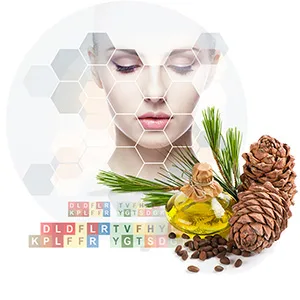Natural Zero Calorie Sugar
Desk of Contents
Add a header to start generating the desk of contents
Natural Zero Calorie Sugar
 Natural Plant Extracts
Natural Plant Extracts
Maximizing the Advantages of Natural Extracts in Natural Plant Extract Merchandise: A Consumer‘s Information
Introduction
Natural plant extracts have gained vital recognition lately as a result of their potential well being advantages. These extracts are derived from numerous components of crops, equivalent to leaves, roots, flowers, and fruits, and include bioactive compounds that may have constructive results on human well being. This person‘s information goals to offer info on the best way to maximize the advantages of pure extracts in natural plant extract merchandise, together with product info, well being advantages, unwanted effects, and analysis developments.
Three Typical Well being Merchandise
1. Turmeric Extract
-
- Product Introduction: Turmeric extract is derived from the rhizome of the Curcuma longa plant. It’s generally utilized in conventional drugs and is thought for its anti-inflammatory and antioxidant properties. Turmeric extract is out there in numerous kinds, together with capsules, tablets, and liquid extracts.
-
- Supply: Turmeric is native to South Asia and is extensively cultivated in India, China, and different tropical areas. The lively ingredient in turmeric is curcumin, which provides the plant its attribute yellow coloration.
-
- Well being Advantages and Medical Proof: Curcumin has been extensively studied for its potential well being advantages. It has been proven to have anti-inflammatory, antioxidant, anti-cancer, and neuroprotective properties. Medical research have additionally urged that curcumin could also be helpful for the remedy of varied circumstances, equivalent to arthritis, Alzheimer’s illness, and despair.
-
- Aspect Results and Precautions: Turmeric extract is usually thought-about protected when taken in beneficial doses. Nonetheless, excessive doses of curcumin might trigger digestive issues, equivalent to nausea, vomiting, and diarrhea. Turmeric may work together with sure medicines, equivalent to blood thinners and antidepressants. It is very important seek the advice of a healthcare supplier earlier than taking turmeric extract, particularly in case you have any underlying well being circumstances or are taking medicines.
2. Inexperienced Tea Extract
-
- Product Introduction: Inexperienced tea extract is derived from the leaves of the Camellia sinensis plant. It’s wealthy in antioxidants, notably catechins, that are recognized for his or her potential well being advantages. Inexperienced tea extract is out there in numerous kinds, together with capsules, tablets, and liquid extracts.
-
- Supply: Inexperienced tea is native to East Asia and is extensively cultivated in China, Japan, and different international locations. The catechins in inexperienced tea are accountable for its antioxidant and anti inflammatory properties.
-
- Well being Advantages and Medical Proof: Inexperienced tea extract has been proven to have a wide range of well being advantages, together with antioxidant, anti-inflammatory, anti-cancer, and cardiovascular protecting results. Medical research have additionally urged that inexperienced tea extract could also be helpful for the remedy of varied circumstances, equivalent to weight problems, diabetes, and cognitive decline.
-
- Aspect Results and Precautions: Inexperienced tea extract is usually thought-about protected when taken in beneficial doses. Nonetheless, excessive doses of inexperienced tea extract might trigger digestive issues, equivalent to nausea, vomiting, and diarrhea. Inexperienced tea may work together with sure medicines, equivalent to blood thinners and antidepressants. It is very important seek the advice of a healthcare supplier earlier than taking inexperienced tea extract, particularly in case you have any underlying well being circumstances or are taking medicines.
3. Garlic Extract
-
- Product Introduction: Garlic extract is derived from the bulbs of the Allium sativum plant. It’s recognized for its antibacterial, antifungal, and antioxidant properties. Garlic extract is out there in numerous kinds, together with capsules, tablets, and liquid extracts.
-
- Supply: Garlic is native to Central Asia and is extensively cultivated world wide. The lively ingredient in garlic is allicin, which provides the plant its attribute odor.
-
- Well being Advantages and Medical Proof: Allicin has been proven to have a wide range of well being advantages, together with antibacterial, antifungal, antioxidant, and cardiovascular protecting results. Medical research have additionally urged that garlic extract could also be helpful for the remedy of varied circumstances, equivalent to hypertension, excessive ldl cholesterol, and colds and flu.
-
- Aspect Results and Precautions: Garlic extract is usually thought-about protected when taken in beneficial doses. Nonetheless, excessive doses of garlic extract might trigger digestive issues, equivalent to nausea, vomiting, and diarrhea. Garlic may work together with sure medicines, equivalent to blood thinners and antihypertensive medicine. It is very important seek the advice of a healthcare supplier earlier than taking garlic extract, particularly in case you have any underlying well being circumstances or are taking medicines.
Analysis Tendencies and Challenges
1. Analysis Tendencies
-
- Identification of New Bioactive Compounds: Researchers are continually trying to find new bioactive compounds in pure plant extracts that will have potential well being advantages. This contains the identification of novel compounds with distinctive chemical buildings and organic actions.
-
- Understanding the Mechanisms of Motion: There’s a rising curiosity in understanding the mechanisms of motion of pure plant extracts and their bioactive compounds. This contains learning how these compounds work together with cells and molecules within the physique to supply their helpful results.
-
- Improvement of New Supply Techniques: Researchers are engaged on growing new supply programs for pure plant extracts to enhance their bioavailability and effectiveness. This contains using nanoparticles, liposomes, and different superior supply applied sciences.
2. Challenges
-
- Standardization of Extracts: One of many main challenges within the area of pure plant extracts is the standardization of extracts. Totally different batches of extracts might range of their chemical composition and efficiency, which may make it tough to match outcomes from completely different research.
-
- High quality Management: Guaranteeing the standard and security of pure plant extracts is one other problem. There’s a want for strict high quality management measures to make sure that extracts are free from contaminants and meet regulatory necessities.
-
- Medical Validation: Though there’s a rising physique of proof supporting the well being advantages of pure plant extracts, extra medical research are wanted to validate their effectiveness and security. This contains large-scale, randomized, managed trials to guage the results of extracts on particular well being circumstances.
3.Ache Factors Introduction
-
- Conventional Extraction Strategies: Conventional extraction strategies, equivalent to solvent extraction and steam distillation, will be time-consuming, costly, and will end result within the lack of some bioactive compounds. There’s a want for extra environment friendly and sustainable extraction strategies that may protect the integrity of the extracts.
-
- Low Bioavailability: Many pure plant extracts have low bioavailability, which implies that they don’t seem to be simply absorbed by the physique. This will restrict their effectiveness and make it tough to attain the specified well being advantages. There’s a want for brand spanking new supply programs and formulation methods to enhance the bioavailability of extracts.
-
- Lack of Regulatory Oversight: The pure plant extract trade is comparatively unregulated, which may result in the manufacturing and sale of low-quality or adulterated merchandise. There’s a want for extra strict regulatory oversight to make sure the standard and security of pure plant extracts.
4.Technical Rules
-
- Supercritical Fluid Extraction (SFE): Supercritical fluid extraction is a contemporary extraction methodology that makes use of supercritical fluids, equivalent to carbon dioxide, to extract bioactive compounds from crops. This methodology is extra environment friendly and sustainable than conventional extraction strategies, because it requires much less solvent and may protect the integrity of the extracts.
-
- Nanotechnology: Nanotechnology is getting used to develop new supply programs for natural plant extracts. Nanoparticles, liposomes, and different nanocarriers can be utilized to encapsulate extracts and enhance their bioavailability and stability.
-
- Formulation Methods: Formulation methods, equivalent to using emulsions, microemulsions, and stable dispersions, can be utilized to enhance the solubility and bioavailability of pure plant extracts. These methods can even assist to guard the extracts from degradation and enhance their stability.
Case
-
- Turmeric Extract: A examine printed within the Journal of Agricultural and Meals Chemistry discovered that supercritical fluid extraction of turmeric resulted in the next yield of curcumin and different bioactive compounds in comparison with conventional solvent extraction. The examine additionally discovered that the supercritical fluid extract had greater antioxidant and anti inflammatory exercise.
-
- Inexperienced Tea Extract: A examine printed within the Journal of Managed Launch discovered that nanoparticles loaded with inexperienced tea extract had greater bioavailability and antioxidant exercise in comparison with free inexperienced tea extract. The examine additionally discovered that the nanoparticles had been capable of goal particular cells and tissues within the physique, enhancing the effectiveness of the extract.
-
- Garlic Extract: A examine printed within the Journal of Pharmaceutical Sciences discovered {that a} stable dispersion formulation of garlic extract had greater solubility and bioavailability in comparison with the uncooked extract. The examine additionally discovered that the stable dispersion formulation had greater antibacterial and antifungal exercise.
Conclusion and Future Analysis Instructions
-
- Conclusion: Natural plant extracts have the potential to offer a wide range of well being advantages. Nonetheless, there are nonetheless many challenges and alternatives within the area of pure plant extracts, together with the necessity for extra environment friendly extraction strategies, improved supply programs, and strict regulatory oversight.
-
- Future Analysis Instructions: Future analysis ought to deal with figuring out new bioactive compounds in pure plant extracts, understanding their mechanisms of motion, and growing new supply programs and formulation methods to enhance their bioavailability and effectiveness. There may be additionally a necessity for extra medical research to validate the well being advantages of pure plant extracts and to make sure their security and high quality.
References
-
- Aggarwal, B. B., & Harikumar, Ok. B. (2009). Potential therapeutic results of curcumin, the anti-inflammatory agent, towards neurodegenerative, cardiovascular, pulmonary, metabolic, autoimmune and neoplastic ailments. Worldwide journal of biochemistry & cell biology, 41(1), 40-59.
-
- Balentine, D. A., Wiseman, S. A., & Bouwens, L. C. (1997). The chemistry of tea flavonoids. Vital critiques in meals science and diet, 37(7), 693-704.
-
- Block, E. (1992). The organosulfur chemistry of the genus Allium – implications for the natural chemistry of sulfur. Angewandte Chemie Worldwide Version, 31(11), 1135-1178.
-
- Chen, X., & Zhong, F. (2017). Nanotechnology purposes in enhancing the bioavailability of tea polyphenols. Tendencies in Meals Science & Expertise, 69, 227-239.
-
- Huang, X., & Chen, J. (2019). Supercritical fluid extraction of pure merchandise. In Supercritical fluid extraction and its purposes (pp. 1-24). Springer, Cham.
-
- Kaur, G., & Arora, S. (2015). Garlic: A overview of potential therapeutic results. In Herbs and spices – current advances in analysis and purposes (pp. 133-148). IntechOpen.
-
- Li, Y., & Chen, J. (2018). Formulation methods for enhancing the solubility and bioavailability of poorly water-soluble medicine. Journal of Pharmaceutical Sciences, 107(6), 1759-1774.
-
- Zheng, B., & Wang, Y. (2019). Natural plant extracts as potential therapeutic brokers for neurodegenerative ailments. Molecules, 24(11), 2116.
